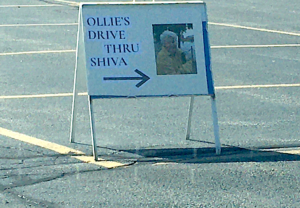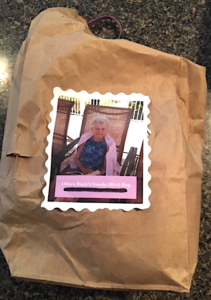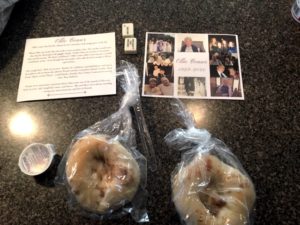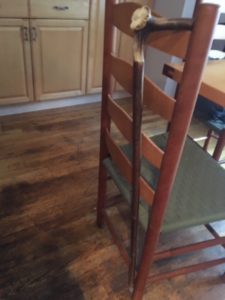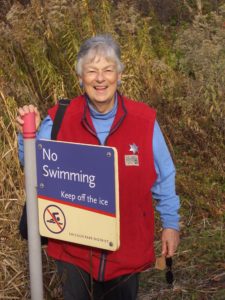Mondays with Mike: Drawbridges and drive-thru shivas
August 17, 2020 • 11 Comments • Posted in Mike Knezovich, Mondays with Mike, travelA couple of vignettes from 2020:
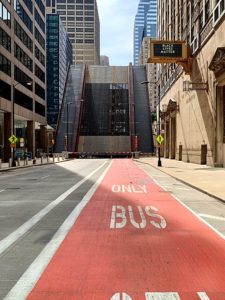
With drawbridges raised, it took some effort to get in and out of downtown Saturday. Photo: AlmightyWorm
Saturday we escaped our concrete jungle in downtown Chicago for the verdant back yard of friends in suburban Glen Ellyn. Well, we ended up inside because of rain, but the thought was good. (FYI, we all were safe. Apart from the continuing good signs about Beth’s and my likely immunity, our friends had just undergone a series of tests owed to safely getting together with family. If that isn’t a 2020 sentence, I don’t know what is.)
It was delightful, as it always is with this group. But we had to earn it. We’d decided to take the Metra (a Chicago-area commuter line) out to the burbs. But we almost didn’t make our train. Beth called her favorite cab company, Flashcab, to order our ride to Ogilvie Transportation Center. We got a message that a cab had been dispatched. But within minutes we got another message that they were looking for a driver. Beth called and learned that the original driver was north of the Chicago River, and because all the drawbridges were up (precautions to prevent potential looting Saturday night), he couldn’t get to us in a timely basis. The dispatcher said he’d look for another driver, but it might take a while. So, Beth canceled and I ordered a Lyft. It came quickly but…you know, the bridges were up on east-west streets, too, meaning we couldn’t get across the bridge on Madison Street to get to the station.
We doubled back and found the lone downtown bridge that was passable at Harrison Street. Beth and I and Luna rushed into the station five minutes before our train was scheduled to depart. All ticket windows were closed, so we headed straight to the train. Everyone had masks, and distanced. We expected to pay for our tickets on the train—but there were no conductors, and everyone rode free.
We took a Lyft back, and luckily, our driver had once lived in our neighborhood — he was able to craft a long, Rube Goldbergish route to our place.
On Sunday, I got a Zipcar and we went to our first ever, maybe THE first ever, drive-thru shiva. I wrote about our friend Jamie Ceaser in an earlier post. Sadly, her mother Ollie passed away recently. It’s been a rough go for Jamie and her family—her mom was in assisted living. For a while they couldn’t see each other, and in the last weeks they could have five-minute visits.
Ollie had a good run, though, making it well into her nineties. A traditional shiva—where the family is visited for days by loved ones to commemorate a death (they “sit shiva”) wasn’t possible. So, our intrepid friend Jamie set out to organize a drive-thru Shiva. When we were notified of the time and date, Beth asked Jamie, “How does a drive-thru Shiva work, I’ve never been to one.”
“I’ve never been to one, either,” Jamie replied. “I may have heard about it or made it up!”
Well, it worked great. Jamie tapped the local public television studio, for whom she’s done a lot of work over time, and they granted their parking lot for the event. I followed Google maps and as we entered the lot, we were greeted by a sign with an arrow that said, “Ollie’s Drive-Thru Shiva.” We followed arrows to the right, then a sign directed us left, where we rolled down windows an passed slowly by tables that displayed photos and mementos of Ollie’s life. As we approached the last table, covered by a canopy, our friend Jamie approached. She handed us two goodie bags she’d assembled. Affixed to each bag was a photo of Ollie labeled “Ollie’s Bialy’s Goody (Bye) Bag.”
We chatted with Jamie for just a bit and moved on so she could greet the next car. We pulled into a spot and Jamie came back and we talked some more. Then a mutual friend walked up and we all got caught up with one another.
All around the parking lot people chatted, masked and distanced. It was strange and terrific.
When we got home, I opened my bag. Two bialys. (They were terrific.) A small, restaurant-sized tub of Philadelphia cream cheese. A plastic knife and a napkin. A large card with a collage of photographs from Ollie’s life on one side, and a note about Ollie and how much she loved games—especially mah-jongg. A second card included a more formal and detailed tribute to Ollie.
And finally, there at the bottom of the bag were two mah-jongg tiles.
To close out here, in Ollie’s honor, I’ll share this brief, poignant homage from one of the cards in our goodie bag:
Ollie Ceaser was a game lover. She played lots—crosswords, canasta, solitaire an, of course, mah-jongg. This tile is from one of Ollie’s mah-jongg sets. It is a little piece of Ollie, and we would like you to hold it close.
Conjure up a favorite memory, say a prayer, keep it in your home, place it in your yard.
Think of Ollie when you see this and send love as we continue to keep her spirit alive.
